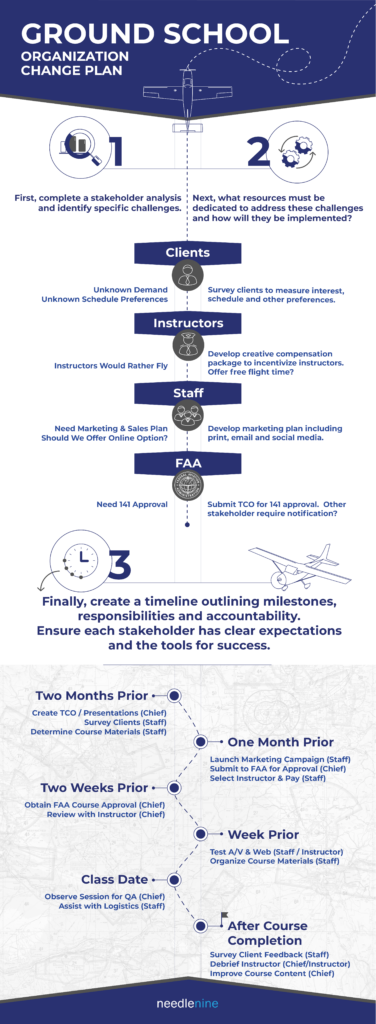Corporate Strategy defines what business and markets you should be in. In other words, are you in the FBO business that also provides flight training or a flight school that provides FBO services? Many businesses suffer from lack of identity as a result of poor corporate strategy. It is important to define who you are and be the best in that market instead of mediocre in many markets.
In the early days of Rainier Flight we developed a reputation for flight training. As the business grew we expanded the facility we brought maintenance and fuel services in house. This provided substantial benefits in operational and cost control for our growing fleet. Lured by the benefits of diversification we began offering those services to outside customers essentially becoming an FBO. However, running an FBO is an entirely different business model and we lacked the strategy to execute well. As a result, time and resources were spent developing those segments to the detriment of our core training market. Profitability declined. It wasn’t until we recognized and accepted our area of expertise and developed a strategy around being the best flight school possible that things began to improve. We retained the maintenance and fuel reaping the benefits of vertical integration but realigned our strategy to support the training operation. Profits increased.
Business Strategy is the process for setting specific goals in furtherance of your corporate strategy, such as which customers you serve and what to offer them. Do you provide comprehensive flight training from Sport Pilot to ATP? Or do you excel at a specific niche like tailwheel training? While it may appear more is better, a strong business strategy within a niche market can be far more effective and profitable.
At Renton Airport we are in a unique position of having both a paved runway and a seaplane base. As flight training professionals it seemed prudent to take advantage of these facilities and offer seaplane training. This required substantial investment in support equipment, staff training and curriculum development. While seaplane training was a lot of fun it was not profitable. Other flight schools in the area specialized in seaplane instruction and did it very well. Instead of competing we recognized it was much easier and more profitable to turn these competitors into partners. Through building relationships, we all benefitted from a collaborative strategy.
Once you identify one or more strategies to pursue, map out an Organizational Change Plan including resources needed and stakeholders affected. For example, let’s say a number of clients express frustration with the online ground schools you recommend. It is not that the content is bad but they need an opportunity to ask questions and engage in discussion with more challenging subject areas. You see an opportunity to not just better serve your existing clients but perhaps also other students in the area that could benefit from a classroom experience. Through offering a low-cost service you have the opportunity to build a relationship that may well transition to becoming flight students. However, to execute successfully you must consider all of the variables and execute through a strong strategy.

This process can be applied to change at any scale. In this simple example a lot of detail is not necessary though complicated strategies may require in-depth research and planning. Involve stakeholders throughout the process to ensure everyone is working together towards a common goal and desired result. Do not under-estimate the importance of measuring successes and failures to continue building on a solid foundation.


Recent Comments